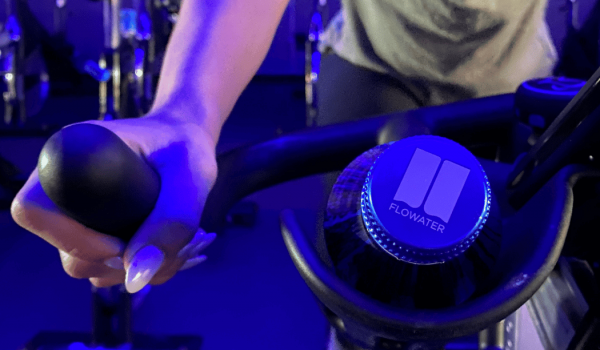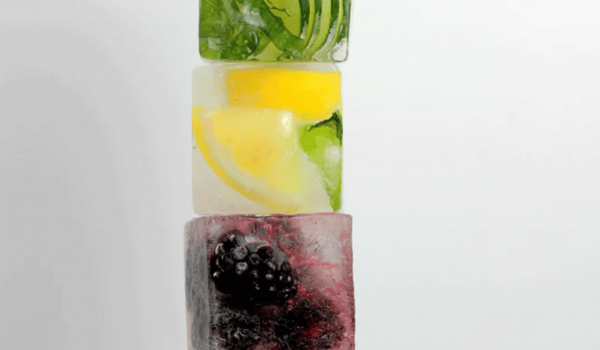Why 40 Investors Are Betting On This Device To Curb America’s Addiction To Plastic Bottles–
Esha Chhabra Contributor
As Millennials begin to turn their back on single-use plastic, the UK government has announced plans to offer free tap water refill stations in every major city and town by 2021. But in the US, where 84 percent of Americans either do not like or do not trust tap water, a different solution is in order.
FloWater is hoping to revamp the conventional drinking fountain in an attempt to woo consumers away from their addiction to bottled water. They call it “un-cycling” — not even letting plastic get into the system.
“We need to wean America off its plastic water bottled addiction,” says Rich Razgaitis, co-founder and CEO of FloWater, a startup that sells and installs filtered water stations to companies, fitness centers, school, and retail outlets.
The scale of single-use plastic crisis hardly needs reiterating. Consumers and policymakers alike are waking up to the sheer scale of plastic waste clogging up the world’s oceans, lakes, and landfills.
“Consider how archaically similar five-gallon water jug delivery is to our far ancestral pathways of taking a jug to the well and bringing it back to the village—yet now we do this with trucks that also emit a copious amount of CO2 and other pollutants into the environment,” he says.
Razgaitis hopes to translate this European initiative into a format that works in the United States. With FloWater, Razgaitis and his team are hoping to change consumer behavior and initiate a move away from plastic, by creating a water that consumers prefer to bottled water.
“I think the intention and application in the UK are terrific on a fundamental level. Consumers having access to more sources of tap water is always a good thing,” he explains. “While we all wish everyone would simply drink tap water, there are some substantial issues with tap water today.”
US consumers have been committed to bottled water with vigor, but for a variety of reasons. In Flint, Michigan, for example, contamination of tap water made bottled water a necessity. Others in more fortunate states simply do not like the taste of their tap water. Further still, a smaller subset of the population simply do not trust the water coming out of their taps.
What he realized, Razgaitis says, was that consumers care about water. Just because a resource is readily available, does not mean branding is irrelevant.
The sheer range of bottled water brands available, each promising the tastiest, smartest, or most hydrating water, can be overwhelming. The bottled water industry is $100 billion market because, he says, consumers care about water.
“If consumers considered all water equal, then nobody in markets with adequate tap water would spend money on bottled water,” he says.
Over five of the top ten selling bottled waters are premium-priced brands–in some cases products that cost more than $3 per bottle. The takeaway here is that consumers care about water; what it tastes like, the brand, psycho-aesthetics, even how they “feel” on a sentimental basis about it, he argues.
FloWater wants to beat the bottled water brands at their own game, and nudge consumer behavior towards a more environmentally friendly alternative at the same time. Thus, the brand claims to transform ordinary tap water into what they’re calling the “best-tasting, most purified water on the market.”
The idea is pretty simple; a FloWater dispenser takes the nearest source of tap water, runs it through seven stages of purification and adds traces of essential electrolytes. Finally, the water is filtered, leaving the user with what the brand hopes is a bottled water taste minus the plastic.
Originally intended for use on college campuses, the brand installed their first fountain in 2013 following an initial round of seed funding that raised over $1 million in investment. However, like many startups learning on the job, Razgaitis says, he soon realized that universities perhaps were not their ideal entry point into the market.
The company’s first real foot in the door has been the fitness and gym market, and has become their so-called bread-and-butter in the following years. In hindsight, it makes sense. Yogis and bodybuilders alike celebrate the virtues of drinking enough water; in some sense, hydration is a competitive sport in and of itself in these crowds. But to do so, without waste.
For Razgaitis, it was a great fit, and the brand built their partnerships to include a number of fitness centers across the US. “This is a group of people who are highly knowledgeable about performance, hydration, and health and who care deeply about the value proposition we offer: not only a great-tasting water free of impurities and plastic but also a performance water,” he explains.
It’s since moved onto a host of other industries: Red Bull, Airbnb, Prana, Google, Dr. Bronner’s, Hilton, Hyatt, Hurley, and many others have signed up to install the devices in their offices, as well as use it for events.
With 40 investors on board now and a growing company, Razgaitis maintains that the driving force behind the company remains the fight against plastic pollution. There’s solid logic behind this; very little of the plastic set aside for recycling actually ends up being repurposed–about 38 billion plastic bottles are not recycled. There’s a good reason the slogan has reduce, reuse, recycle in that particular order.
FloWater is also competitive in pricing: “A FloWater unit can easily be 20 to 30 percent less than a conventional water fountain,” he says. “On a per-gallon-used basis, our research shows service costs for our seven-stage filtration system are over 50 percent less than the current market leader water fountain with a single stage carbon filter.”
FloWater is hoping to push consumers toward reducing; not by guilting them into drinking tap water, but by hopefully offering them something they prefer.
“By offering consumers a better product—that also happens to be better for the environment—is where radically demonstrable changes in consumer behavior occur,” he says.
Read the original article here









